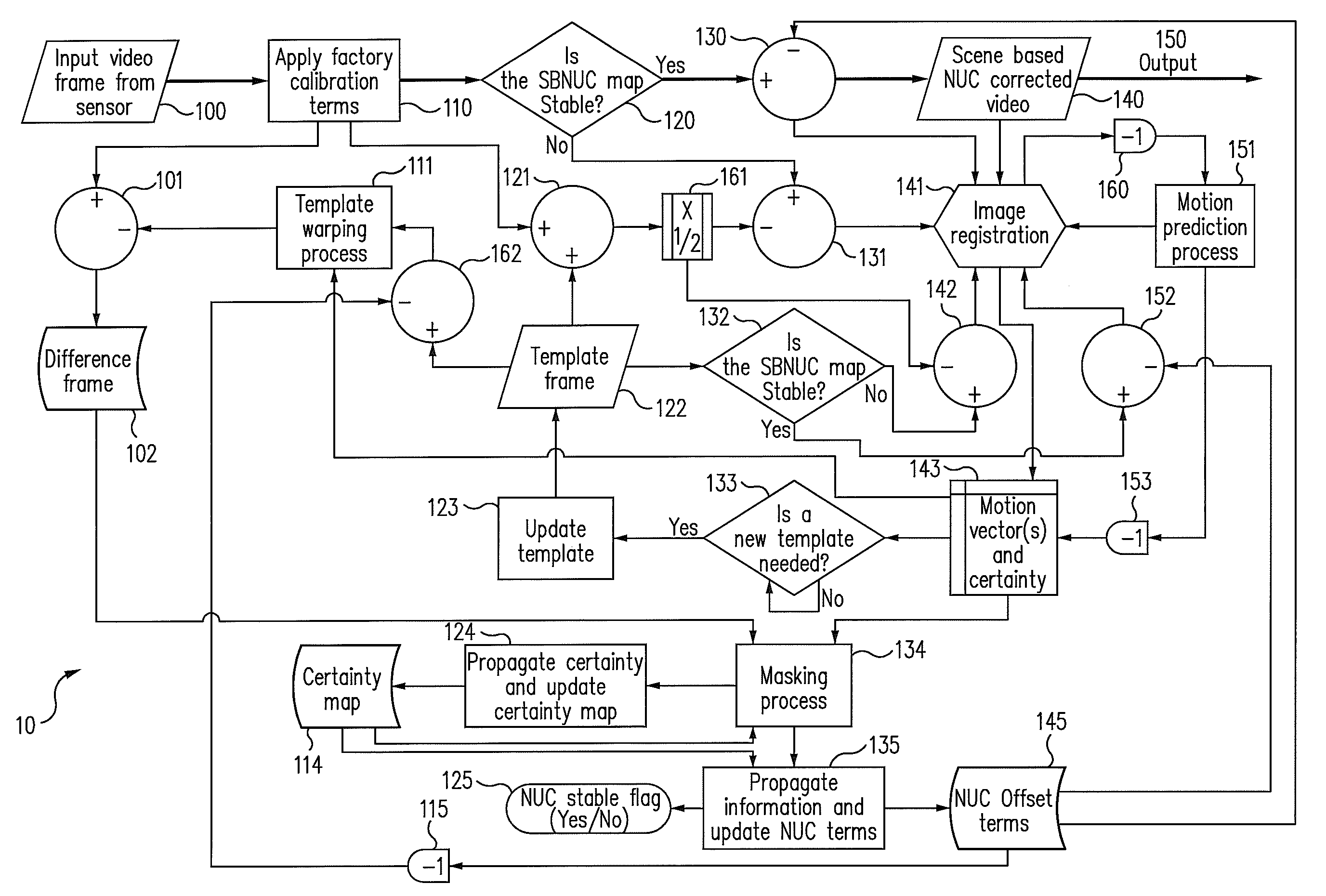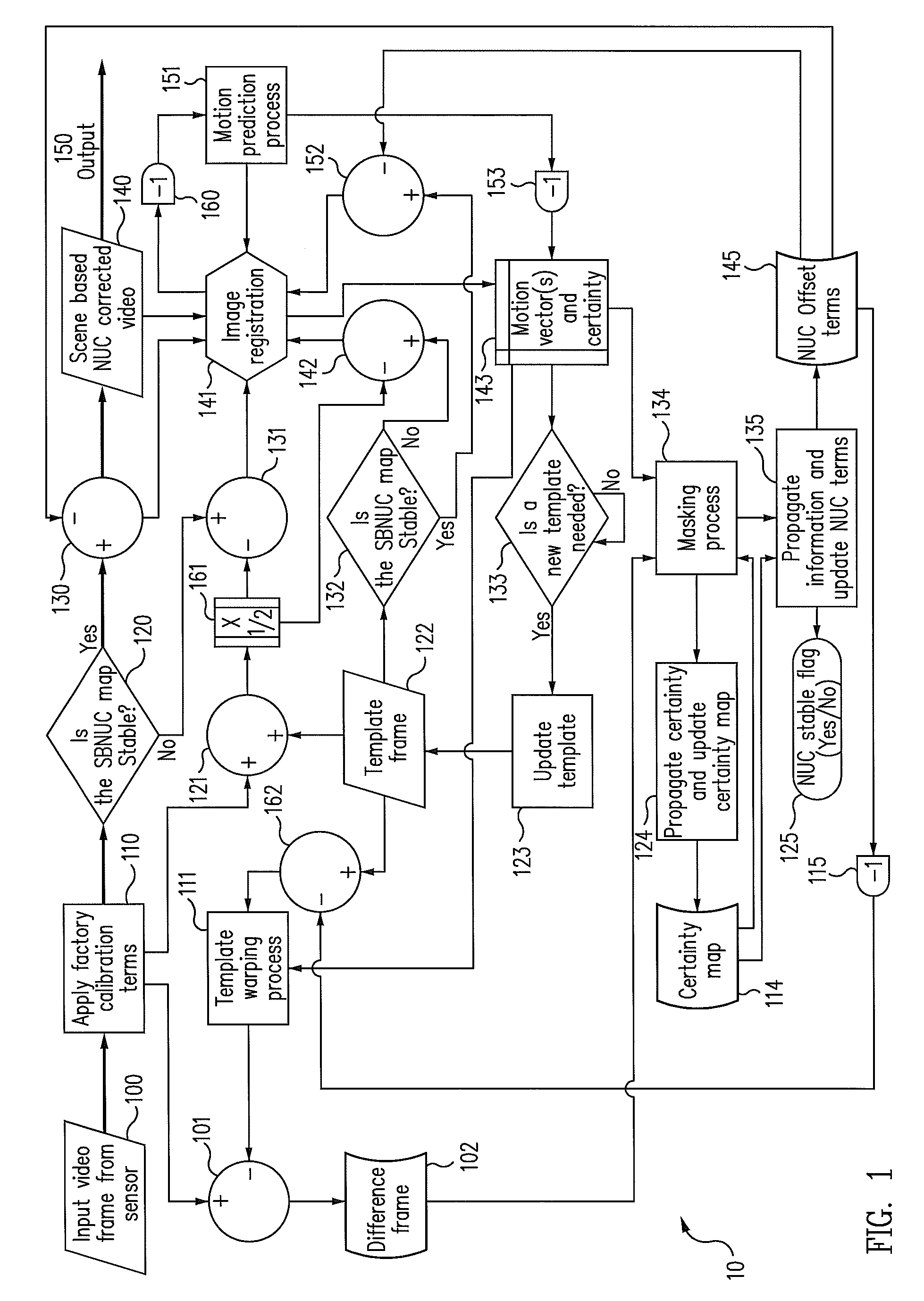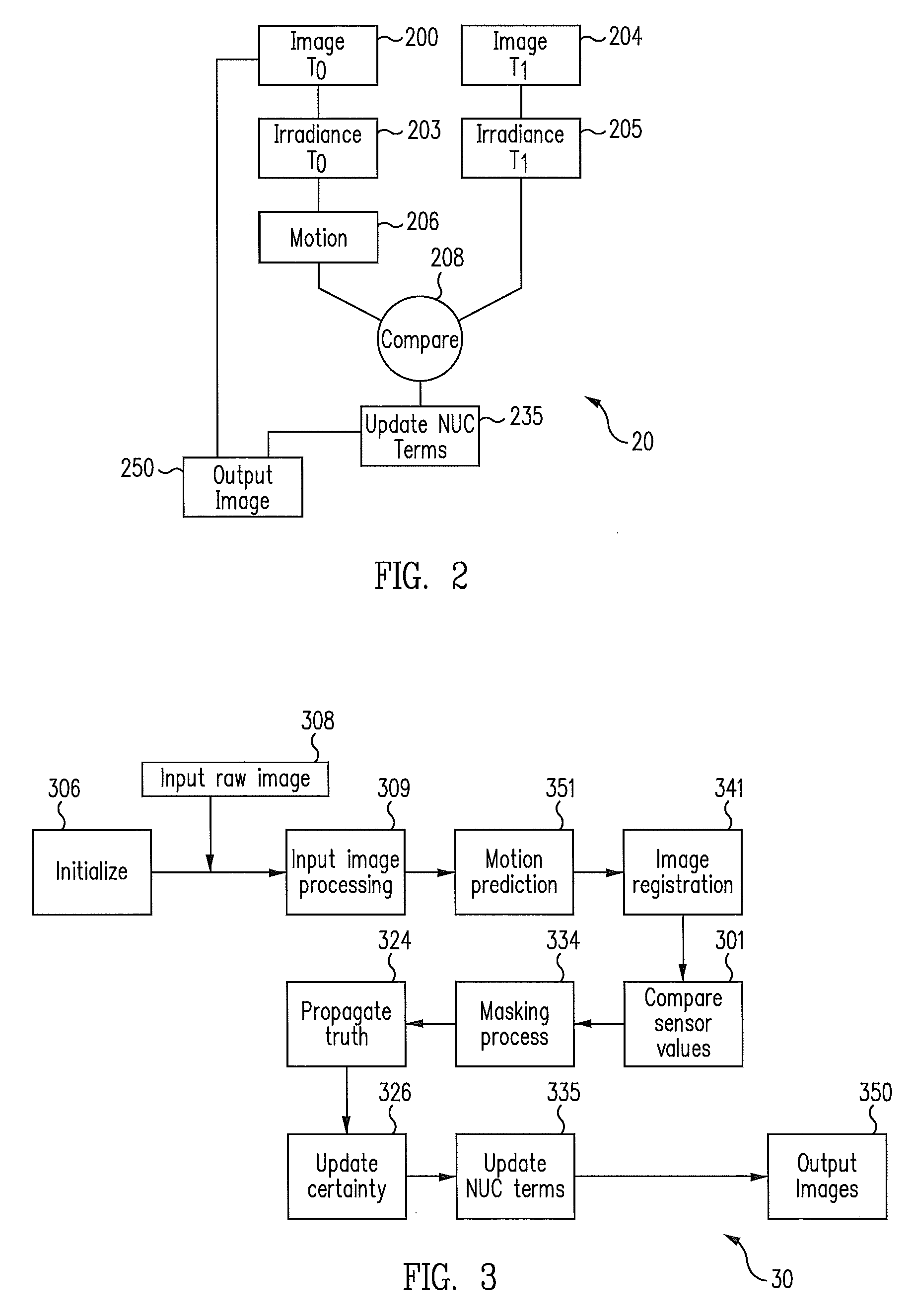Scene based non-uniformity correction systems and methods
a non-uniformity correction and scene technology, applied in the field of infrared imaging systems, can solve the problems of inability to accurately detect the image, generate the image, and the dominant source of noise may result from fixed pattern noise (fpn), and achieve the effect of reducing fixed pattern nois
- Summary
- Abstract
- Description
- Claims
- Application Information
AI Technical Summary
Benefits of technology
Problems solved by technology
Method used
Image
Examples
Embodiment Construction
[0020]FIG. 1 illustrates a block diagram of an algorithm 10 to perform non-uniformity correction (NUC) on infrared image data. Algorithm 10 may perform NUC based on information contained within the infrared image data of the scene being imaged and may be referred to as scene-based NUC (SBNUC). For example, algorithm 10 may provide SBNUC for a system that captures multiple images (e.g., image frames) of the scene over time, for example video images generally of a scene from an infrared camera.
[0021]In an example embodiment, algorithm 10 may be based on certain principals. For example, the scene irradiance may be assumed to be static over a number of frames (e.g., at least two frames), while the FPN may be assumed to be static over a larger number of frames (e.g., on the order of a hundred frames). The algorithm may also assume that there is some movement relative to the sensor from frame to frame, even where the camera is stationary.
[0022]As a specific example, referring briefly to F...
PUM
 Login to View More
Login to View More Abstract
Description
Claims
Application Information
 Login to View More
Login to View More - R&D
- Intellectual Property
- Life Sciences
- Materials
- Tech Scout
- Unparalleled Data Quality
- Higher Quality Content
- 60% Fewer Hallucinations
Browse by: Latest US Patents, China's latest patents, Technical Efficacy Thesaurus, Application Domain, Technology Topic, Popular Technical Reports.
© 2025 PatSnap. All rights reserved.Legal|Privacy policy|Modern Slavery Act Transparency Statement|Sitemap|About US| Contact US: help@patsnap.com



